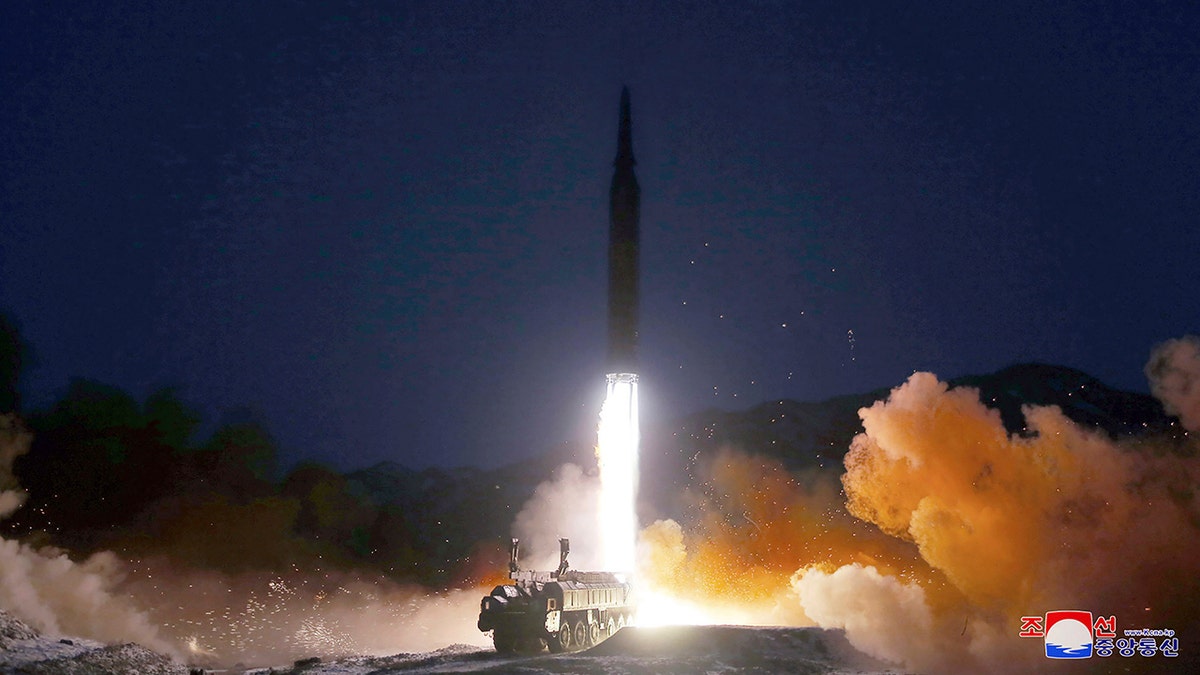Fox News Flash top headlines for November 3
Fox News Flash top headlines are here. Check out what's clicking on Foxnews.com.
The U.S. and South Korea issued a joint warning to North Korea on Thursday, warning that any use of nuclear weapons would result in the end of Kim Jong Un's regime.
North Korea fired an unprecedented 23 missiles in a single day on Wednesday amid extensive joint air force exercises between the U.S. and South Korea. Kim's regime has made veiled threats about nuclear weapons in recent days as well.
"Any nuclear attack against the United States or its allies and partners, including the use of non-strategic nuclear weapons, is unacceptable and will result in the end of the Kim regime," South Korean Defense Minister Jong-Sup Lee said Thursday, in a joint news conference with Defense Secretary Lloyd Austin.
The U.S. and South Korean militaries announced an extension to a joint air force exercise earlier on Thursday. The move came in response to North Korea launching an intercontinental ballistic missile (ICBM) and two short-range missiles after Wednesday's barrage.
NORTH KOREA WARNS OF ‘MORE POWERFUL’ RESPONSE TO JOINT US-SOUTH KOREA MILITARY DRILLS

In this photo provided by the North Korean government, North Korean leader Kim Jong Un attends at a meeting of the Workers' Party of Korea in Pyongyang, North Korea, on Feb. 28, 2022. (Korean Central News Agency/Korea News Service via AP)

Defense Secretary Lloyd Austin speaks during a briefing at the Pentagon in Washington, D.C., on Oct. 27, 2022. (AP Photo/Susan Walsh)
NORTH KOREA LAUNCHES BALLISTIC MISSILE TOWARD ITS EASTERN WATERS, SOUTH KOREA SAYS
South Korean media reported that officials believe the North's ICBM failed in flight but did not elaborate. Meanwhile, North Korea's two short-range ballistic missiles fell into the sea to its east. Japan initially sounded alarms after tracking suggested the ICBM would fly over the island nation, but officials later said they lost track of it mid-flight, according to Reuters.
North Korea has grown increasingly aggressive since the U.S. and South Korea began joint military exercises in September. The country also flew 12 warplanes near the South Korean border in early October. The sortie included eight fighter jets and four bombers. South Korea responded with a flight of 30 warplanes, but the two groups did not engage.
The U.S. and South Korea's joint air force exercise, Operation Vigilant Storm, was scheduled to end Friday but will now extend into the weekend following North Korea's launches.

This photo provided by the North Korean government shows what it says a test launch of a hypersonic missile on Jan. 11, 2022, in North Korea. (Korean Central News Agency/Korea News Service via AP)

South Korean Air Force's F15K fighter jets and U.S. Air Force's F-16 fighter jets fly in formation during a joint drill in an undisclosed location in South Korea, on Oct. 4, 2022. (South Korea Defense Ministry via AP)
The exercise sees allied fighter jets and bombers conducting simulated attacks across South Korea 24 hours a day.
South Korea had a failed missile launch of its own in October. The malfunction came as the U.S., South Korea and Japan were seeking to send a message to the North Korean regime after it sent its own ballistic missile flying over the island of Japan. U.S. military officials clarified that the warhead on South Korea's missile did not explode, but the propellant caused a large blast and flames.
CLICK HERE TO GET THE FOX NEWS APP
No injuries were reported from the incident, civilian or otherwise, and South Korean officials say no buildings were damaged.
This is a developing story. Check back soon for updates.

